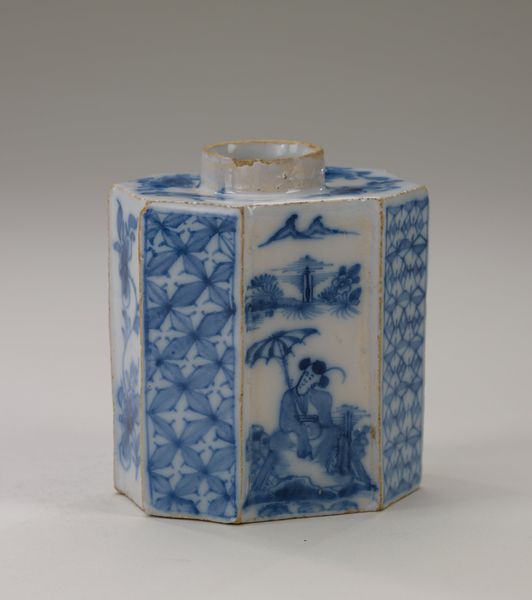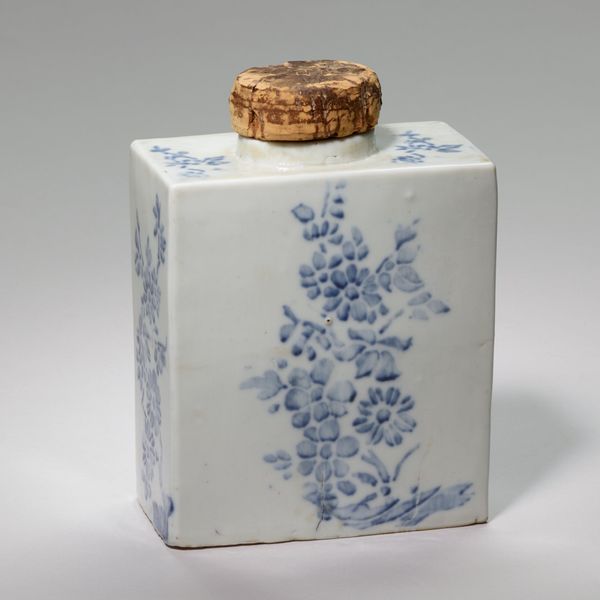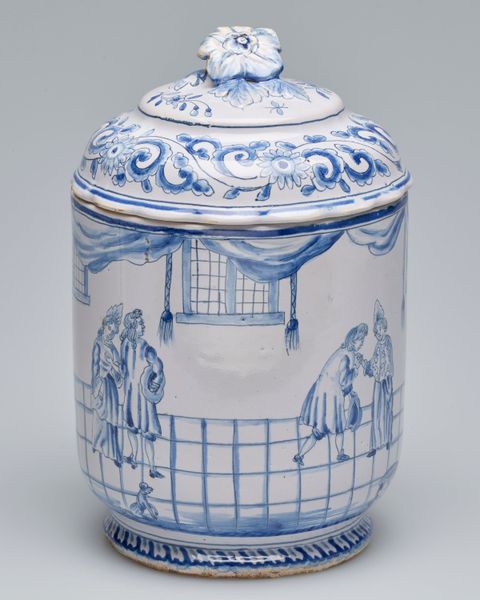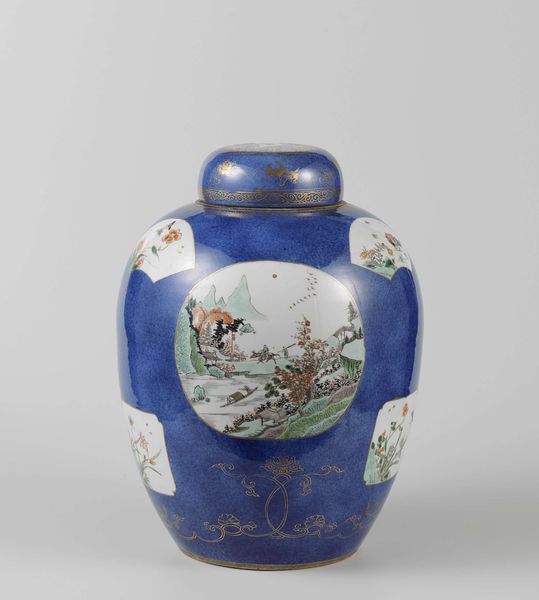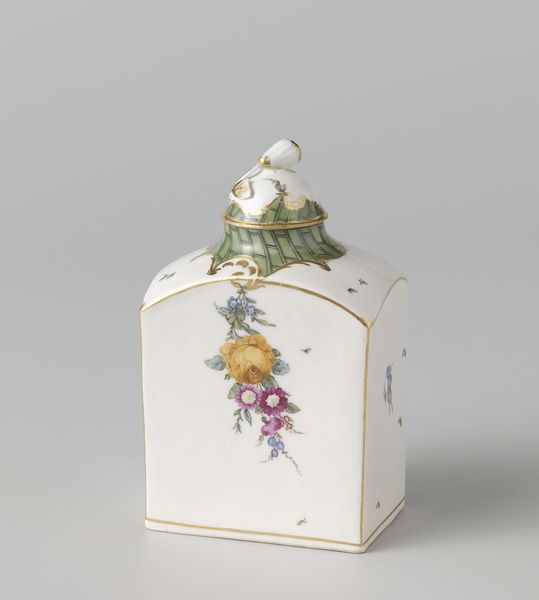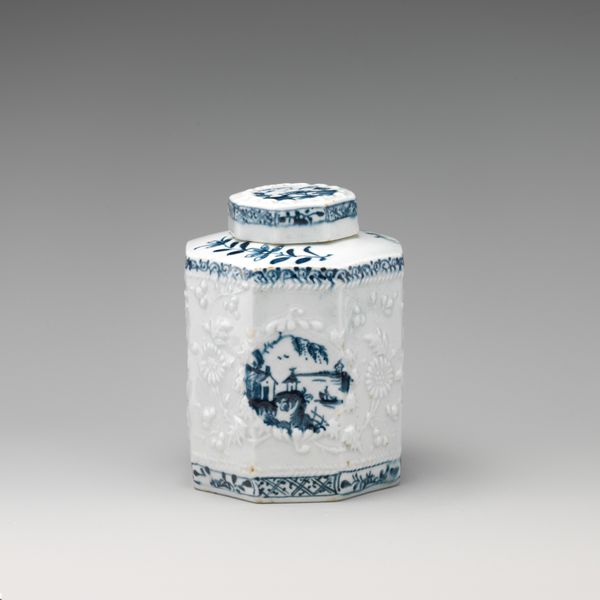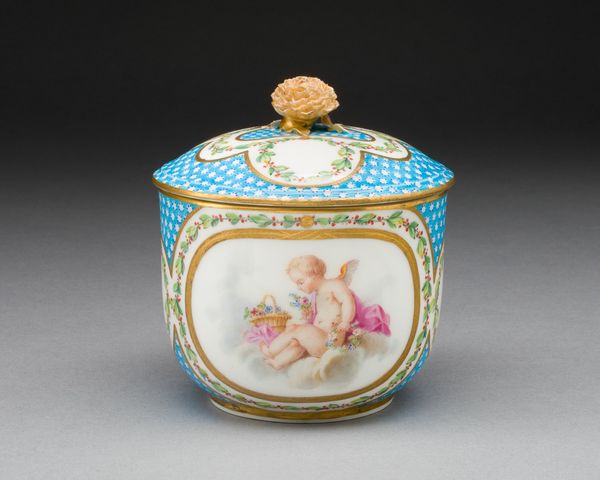
#
ornate
#
product studio photography
#
product staged
#
3d printed part
#
product fashion photography
#
jewelry design
#
product showcase
#
framed image
#
ceramic
#
product photography
Dimensions: height 15 cm, width 9 cm
Copyright: Rijks Museum: Open Domain
Curator: This curious object is a tea caddy dating back to 1727. Crafted by Johannes Verhagen, it's painted with Old Testament and amorous scenes. What do you make of it? Editor: It’s… strikingly rectangular. The blue and white ceramic seems cool, reserved. The narrative scenes almost look like a cartoon strip wrapping around it, a playful yet serious form. Curator: The Dutch East India Company certainly influenced the demand for tea accoutrements such as these. Note how this object exemplifies the cultural exchange happening then; Asian-inspired ceramics reinterpreted through European narratives. It reveals quite a bit about trade and taste. Editor: Absolutely, it embodies a tension I find interesting. You have these refined, almost neoclassical architectural details bordering scenes of courtship, mixed with imagery plucked from the Old Testament – creating a fascinating dialogue about social codes, religion, and perhaps, colonial desire. Look how the biblical figures interact beside flirtatious scenes. It all feels strangely intertwined! Curator: We see this mixing of sacred and profane elsewhere in art, though here it's miniaturized on an everyday object, making it rather intimate. These objects were status symbols. Their presence speaks to global connections and access to global resources that reflected privilege. Editor: The layering of narratives speaks to a desire to construct meaning, and the tea itself held a certain allure. Consumption, especially visible consumption of global resources like tea, created identity. What are they saying with these particular images? I mean, who commissioned this, and why these choices? Curator: Records point towards affluent merchant families in Amsterdam. Given their social standing, these scenes possibly articulated their aspiration to refinement and cultivation. The amorous images alongside biblical allusions could perhaps denote domestic virtues mixed with worldly pleasures—themes valued in that social circle. Editor: I appreciate seeing these dynamics through material culture, through things we still value today. Curator: Indeed, these objects act as social texts of their time, encapsulating values. Editor: And forcing us to see new meaning in historical contexts. Thank you.
Comments
No comments
Be the first to comment and join the conversation on the ultimate creative platform.
